Fallen Leaders: George Custer and the Question of Leadership
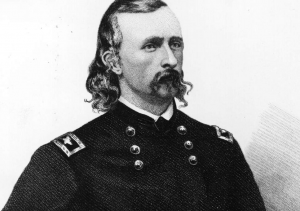
Over the past month, we have read many stories about fallen leaders of the American Civil War. We have mostly looked at those who have lost their lives in the midst of battle or its aftermath. However, a sometimes-forgotten fallen leader of the Civil War is George Armstrong Custer. This individual, who should be addressed in detail, mainly gets excluded because he lost his life not in the midst of a Civil War battle, but more than 20 years later at the Battle of Little Bighorn.
Custer’s story is unique, similar to many of the fallen leaders we have learned about over the past few weeks. But what sets Custer apart is his rise and fall as a leader. Essentially both his rise and fall take place after his death. So, what makes a leader and moreover what makes a fallen leader?
Some may argue that his rise began with the American Civil War. Custer does make quite a name for himself, specifically given that he begins his career ranked last in his class at West Point. To this day, he holds the record for the most demerits (726 to be exact). If not for the Civil War, Custer would most likely have been sent to some obscure post and perhaps forgotten.
However, as the Civil War broke out, officers were needed to defend the country against the seceded southern states. Like many of Custer’s classmates, he was commissioned as a second lieutenant and placed in the 2nd U.S. Cavalry Regiment.
He fought at the First Battle of Bull Run and was tasked by Army Commander Winfield Scott to carry messages to Major General Irvin McDowell.
He was present during the Peninsula Campaign, in which he famously answered General Barnard’s question on how deep the Chickahominy River was by riding his horse into the center and proclaiming, “That’s how deep it is, Mr. General.”
Custer’s personality and aggression soon drew the attention of the higher command. In 1863, he was promoted to Brigadier General. He was only 23.
Despite some complaints about his reckless nature, Custer was known for his attention to detail and military strategy – able to surprise and rout the enemy every time.
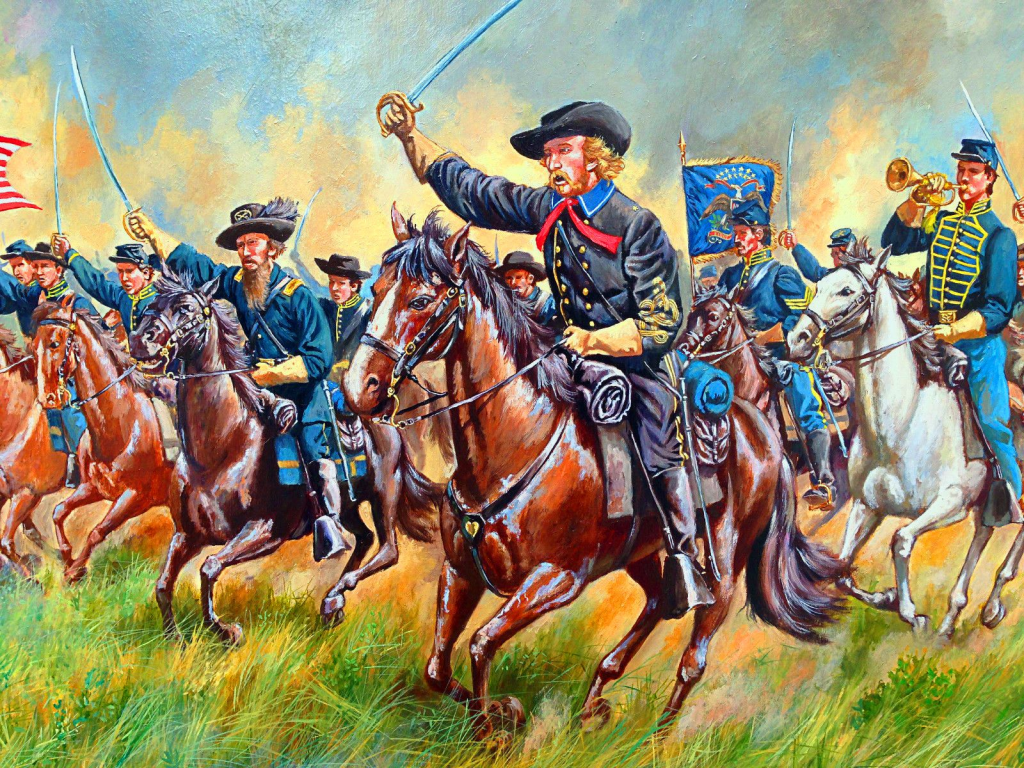
Whilst outnumbered by J.E.B. Stuart’s forces at Gettysburg, Custer rode to the front line, drew his saber, and shouted, “Come on you Wolverines!” Stuart withdrew his troops – and although Custer’s men suffered the highest losses of any Union Cavalry brigade that day, Custer was rewarded with a promotion to Major General.
Towards the end of the Civil War, Custer participated in Sheridan’s campaign and the burning of the Shenandoah Valley. He also played a role in the cavalry actions during the Overland Campaign, before taking part in the Siege of Petersburg. Finally, near Appomattox Court House, he received the first flag of truce from the Confederate forces.
It’s not impractical to say that Custer had made a name for himself by the time the war had ended. After the war, he accepted a new command and was sent West. It was in this new role that his reputation first showed signs of fracture. Many of his men had fought in the western theater of the war along the Gulf Coast, and resented the discipline imposed and the orders given by Custer. Though only having taken command in June 1865, Custer’s division was mustered out beginning in November of the same year. There is speculation that the hatred among the men toward their commander ran so deep that upon mustering out, several actually planned to ambush the Major General. Custer however was warned and the attempt was unsuccessful. In 1866, he had been arrested and suspended from military duty as he had gone AWOL, choosing to visit his wife rather than remain at his post. His suspension was cut short, and Custer was allowed to return to duty as Major General Sheridan planned his winter campaign against the Cheyenne. In early 1867, he was given command of the 7th Cavalry Regiment, and his orders were to help establish Camp Supply, which would be used, as the name suggests, as a supply base for Sheridan during the campaign.
Historic Marker at Camp SupplyIt was at this point that Custer truly began garnishing a name for himself in the Indian Territory. On November 27, 1868, he led his men in the Battle of Washita River. During this battle, Custer reported killing 103 Native Warriors. Reports also indicated that there were some native women and children killed in the attack, though the number remains unknown. Additionally, 53 Native Americans were taken prisoner. These numbers differ substantially from those reported by the Cheyenne, who state that only 11 warriors and 19 women and children were killed. Whatever the casualties, the Battle of Washita River is still regarded as the first major victory of the United States in the Southern Plains War. This resulted in a large portion of the Southern Cheyenne population being forced into a U.S. reservation.
Five years later, Custer was reassigned to the Dakota Territory and tasked with protecting a railroad survey party against the Lakota Native Americans. His first encounter with the Lakota occurred on August 4, 1873. In the small clash, only two men were killed, one from each opposing group. This would not be foreshadowing of the commander’s last encounter with the Lakota.
By early 1876, President Ulysses S. Grant’s administration had set a deadline that required that all Lakota tribes in conjunction with the Arapaho tribes to report to their designated reservations. Those that did not abide would be considered hostile.
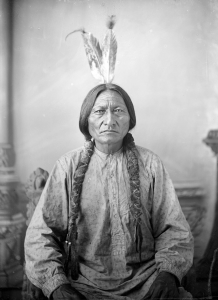
By the spring and summer of 1876, Sitting Bull, the Hunkpapa Lakota holy man, had gathered the largest gathering of Plains Indians, including the Lakota, Northern Cheyenne and Arapaho tribes, to discuss what could be done about the U.S. military. The group originally met at Ash Creek in present day Montana, but they eventually moved to the Little Bighorn River. It was there that the 7th U.S. Cavalry would meet their fate in a bloody battle that would forever leave its mark on history and the legacy of George Armstrong Custer.
The Little Bighorn Valley was part of the Crow Indian Territory. However, the Lakotas were staying in the valley without the permission of the Crow tribe, who had sided with the U.S. Army in their Indian removal efforts. The Crow viewed the Lakotas as invaders in their territory.
In June, Major Marcus Reno of the 7th U.S. Cavalry, discovered a trail leading to a large village along the Rosebud River. Custer’s entire regiment was detached to follow the trail. Three days later, the Crow Indian scouts with Custer, identified what they believed to be a large Native encampment in the valley near the Little Bighorn River. Custer had originally planned to attack the village the following day, but their presence had been discovered, so he ordered an attack immediately. On June 25th, 1876, Custer divided the 7th U.S. Cavalry into 3 battalions, one led by himself, one by Major Reno, and the other by Captain Frederick Benteen. Reno was tasked with charging the southern end of the encampment, while Custer rode northeast, intending to circle around and attack the northern edge of the village. Benteen was sent southwest to check for any Native American presence and to also be at the ready to protect the southern column if needed.

As Reno began his charge, he halted roughly 500 yards from the camp. His men dismounted and quickly formed a skirmish line. They were quickly overwhelmed by the Lakota and Cheyenne warriors. Quickly, the men retreated to the tree line along the river and were able to make a stand, but at a great cost. It is estimated, Reno lost a quarter of his command in this opening action.
It is not known if Custer saw Reno stop and form the skirmish line. Nevertheless, he launched his attack from the north. Ideally, if executed correctly, the village would be sandwiched between the two attacking forces in a “hammer and anvil maneuver.” Unfortunately for Custer and his men, this is not what happened. As Reno was forced to retreat to the tree line near the river, Custer also in his approach to the village was routed and forced to retreat, in turn being completely overwhelmed by the sheer number of Native warriors.
In Custer’s retreat, it is unclear as to exactly what happened. We know that as he and his men drew back, they were pursued by the Lakota. Eventually, he was forced to stop and make what would become known as “Custer’s Last Stand” on the ridge north of the Native encampment.
Evidence exists that some of Custer’s men were able to form skirmish lines before being overwhelmed once again by the ferocious attack. As the lines broke, many ran to where Custer and the other officers were making one final stand. Very quickly after, every man in Custer’s battalion-sided command was killed.
Custer began with 208 officers and men under his direct command, Reno had 142, and Benteen had just over 100. Moreover, the lowest estimates suggest that the Lakota and Cheyenne numbered around 1,500, but in all likelihood, it would have been closer to 3,500. It was a resounding defeat for the United States and has earned its place in our history books. But what of Custer? Is this where he becomes a fallen leader? On the battlefield? Custer, in a literal sense, fell on that day in June, but more than ever, his story and legacy lived on. The legend of Custer was printed and reprinted time and time again.
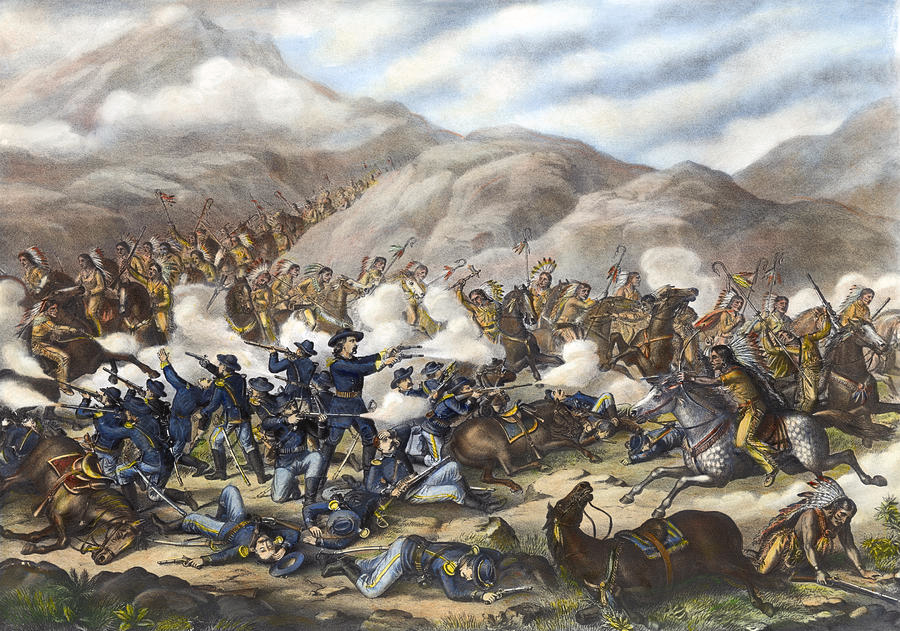
Custer began with 208 officers and men under his direct command, Reno had 142, and Benteen had just over 100. Moreover, the lowest estimates suggest that the Lakota and Cheyenne numbered around 1,500, but in all likelihood, it would have been closer to 3,500. It was a resounding defeat for the United States and has earned its place in our history books. But what of Custer? Is this where he becomes a fallen leader? On the battlefield? Custer, in a literal sense, fell on that day in June, but more than ever, his story and legacy lived on. The legend of Custer was printed and reprinted time and time again.
The purpose of this is not to say that criticism of him is not well deserved. But rather look at what makes a fallen leader fallen. Is it the physical act of death or the metaphoric fall in public opinion?

George Armstrong Custer, perhaps, has fallen the hardest of all in both aspects. He was at one time considered to be a true hero, a martyr who fell defending the frontier. Sixty years later however, as the great depression was raging on, it became harder for the American people to buy the tragic hero story. With biographer Frederic F. Van de Water’s biography Glory-Hunter, published just a year after Custer’s widow and perhaps greatest defender’s death, Custer’s reputation sank even further. Van de Water’s portrayed Custer as an petulant man who was nothing more than a “deplorable soldier.” Moreover, by the 1960’s, there was growing empathy for the Native Americans, and disdain for Custer only soared. Today, he is still shown as vain and stupid if his portrayal in “Night at the Museum 2” has any merit.
His name is no longer touted as a tragic military hero but rather the punch line of a joke. It is shocking that someone with such a colorful and noteworthy military career has become nothing more than a disgraced figure among today’s students of history.

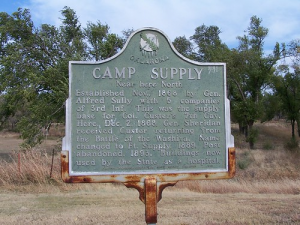
I like this phrasing: “. . . officers were needed to defend against the seceded southern states.” As if it was the South who invaded the North, not vice versa. I suppose that is more acceptable than stating more accurately that the Federal army needed officers to invade the South or to force the South back into the Union.
Tom Crane
Putting aside the fact that the south would invade the north during the war, the confederates also attacked first at fort Sumter. Meaning there was a need for defense of the union.
Sure. And after Ft Sumter, what further defense did the union need?
Tom
Yup … It’s the loyal citizens of the United States doing their small “r” republican duty — defending the Union against the seceding southern states.
I think that “invading” is a poor choice of words when describing an attempt to respond to treason- the firing upon the nation’s flag – and the traitors were fighting to keep their fellow humans in chains.
I agree that the term “invading” the South is inappropriate, considering that the South committed treason and fired on our nation’s flag…and did so to
preserve their desire to keep fellow human beings in chains. States’ rights? B.S. Read Confederate documents if you think otherwise
Otherwise, nice piece. Thanks.
Tom
As a Michiganer, (no d), there is a great deal of state pride in Custer’s triumphs in the Civil War and embarrassment for his role in the genocide of Native Americans and his aggressive foolishness in getting everyone in his detachment killed at the Little Big Horn. “Custer Victorious” by Gregory Urwin (1983) obviously does not cover the Indian wars, but shows Custer’s aggressiveness during the Civil War certainly led to his rise and recognition during his lifetime. His “Come on you Wolverines” charge on the third day of Gettysburg protected the Union rear from JEB Stuart, and one of his Michigan brigade shot Stuart at Yellow Tavern. Shelby Foote claims 44 year-old Private Huff shot Stuart from thirty feet away, but Unwin points out Huff was killed a few days later without definitive testimony and there are other candidates for the targeting of Stuart. Custer really shone in the Appomattox campaign with Sheridan’s aggressive cavalry not chasing Lee but staying ahead of him and cutting off every attempt at escape. After the final failed attempt of the rebels to breakout on April 9th, under flag of truce Custer rode in to demand the surrender of the Army of Northern Virginia and received a dressing down from General Longstreet. An omen of heedless conduct to come in eleven years.
I could write a book on what was wrong with Sheridan’s plan at the battle of five Forks April 1, 1865. The main flaw was that he did not send any troops to cut off the rebel escape routes. There were two of them. There was a wide open escape route that led northward from the road at this junction at five forks northward. This route headed north and ended at the southside rail road. The second escape route lay west along the White Oak Road. North of the Gilliam graveyard there was a path called the Roper Road. it also led to the Southside railroad . That’s how most of pickett’s army escaped.
Custer sent two of his brigades North to block the white oak road, and thus prevent the escape of the confederate army.
This will be lengthy, and I cannot help that. My apologies if you will. But Custer has always been a subject I enjoy talking about. He is also always a complicated subject.
I don’t mean to nitpick here, but Custer did not die “more than 20 years after the Civil War”, but a little over 10 after the conclusion of that.
That said, there has been as much disinformation put out about Custer over the years as there has been truth. The claims that he was going to seek public office, and hence needed something akin to “glory” on the battlefields of the Dakota Territory and other locations to propel him to that, appear to have been discredited. His attack on Black Kettle’s village has been portrayed as some sort of atrocity, yet several among the Indians there put up quite a fight. Several reputable sources over the years have reported that several captives, including white captives, were freed from there as well. It was a very, very complicated situation involving various Indian parties and tribes, and some among their trails led directly into Black Kettle’s village. And there was a war going on against some of them.
Per Custer’s actions visa vis what would become the Little Big Horn battle, he did NOT disobey any orders. He had the authorization to act as situations dictated. It’s vitally important to remember that Custer was in command of one of three separate forces that were engaged in what can be described as a ‘pincer’s movement’ to contain and bring the various warring tribes to bay. One of those forces was defeated by Crazy Horse several days before the Battle of the Little Big Horn, at the Rosebud River. Because of communications limitations, Custer did not know that. His actual plan for assailing the Indian village there was actually fairly routine in the West, with the idea of bringing the braves to heel by way of holding the village occupant’s hostage. It was a “standard operating procedure”. Custer’s respect for the fighting qualities of the tribes he was up against was well known, so to claim that he would intentionally be reckless in his approach to fighting them doesn’t really hold up. Key word here is “intentionally”. An aside here, Custer remained in the Army after the Civil War, and accepted a demotion in doing that, so he was obviously a dedicated soldier.
There remains as much if not more about what we do NOT know about what befell him and his men at Little Big Horn than what we DO know. A bad situation (as far as the actual size of the Indian forces arrayed against him) became much worse, and very quickly at that. Miscommunications, lack of ‘actionable’ information, some obvious bad decisions, and just flat-out bad luck all conspired against the 7th Cavalry that day. Custer is easy to place all the blame on, because of some well-known aspects of his personality. And yes, the buck stops with him, so some of that is quite fair. I personally have always viewed Custer as a quite capable officer and LEADER whom circumstances brought down. Was he a GREAT leader? That will probably always remain a GREAT question and will depend on who is asked. I make an analogy to NFL quarterbacks, though I accept that it might be a poor one. One standard that always seems to be applied in rating them is whether they ever won Super Bowls (or league championships before that). Yet there are NFL QBs in the Hall of Fame who never won championships. So, are THEY truly “great”? So if Custer had prevailed, or at least survived, at the Little Big Horn, would we view him as “great”? That would be among the interesting “what if” questions that are quite popular on this site.
In conclusion, I can only imagine how we today would view ourselves in this life if we were or had been made a GENERAL at the age of 23, commanding large forces of men in combat. I think Custer was a man of his times, unique in some ways, not so much in others. But he sure is fun to talk about. To me anyways!
Interesting article and comments. Custer was definitely not my favorite Civil War character. He was full of himself, as many were; however, his actions against Jeb Stuart at Gettysburg were what I thought was a pivotal moment.
I gave Custer his due for his service during the Civil War. His service out west was a different story.
Always interesting to hear how people view Custer! Thanks for the article and the comments above.
No Indian fighter could have imagined that the Sioux, the Cheyenne, and the Arapaho would have gathered together in an immense village on the little bighorn. They were 4000 warriors in that village. Such a phenomena had never happened before and it never happens again. Customer had the misfortune of being in the wrong place at the wrong time.
I doubt that’s a combined forces of gibbon, crook, Terry, and Custer could’ve defeated that many Indians,
Reno lost almost all of his killed after he decided to withdraw from the field. witnesses stated that his casualties up to that time might have been one killed. Reno hatred his own advance not the native forces directly.